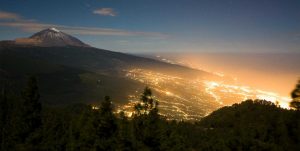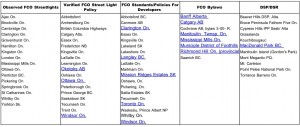On behalf of the Council of the Vancouver Centre of the RASC, and as its new President, I would like to take this opportunity to welcome you to the exciting start of a New Year of activities that is sure to inform our membership, reach out to the public, and provide many opportunities to experience the cosmos! I would also like to look ahead to a new set of opportunities for us to collectively strengthen our Vancouver Centre (VC).
I first wish to extend my warmest personal appreciation and affection to our Immediate Past President, Ron Jerome. At our 2010 AGM, Ron was publicly recognized by council for “his kind stewardship, and sage advice in directing our centre over the last two years as president” (to quote from Secretary Alan Jones’ AGM report). His leadership has set the stage for many of the new initiatives that will be brought forward by council this year, in concert with you, our membership.
We start off the year with a truly exceptional “catch” for our public meeting on January 13, when (thanks to our resourceful Speakers Chair, Barry Shanko) we host Dr. John Mather of the Goddard Space Flight Centre, co-recipient of the 2006 Nobel Prize in physics! Dr. Mather is currently a principal investigator for the James Webb Space Telescope (set for launch by 2015). He will talk about his work from the early 1990’s that led to his Nobel Prize, and will look ahead to the potential for the discovery of alien life by the new space telescope! (Looking for a short backgrounder on Dr. Mather’s Nobel Prize work? I give my take below ;). Our speaker line-up for the rest of 2011 already includes a noted amateur telescope maker and astro-imager, and a science writer with an intriguing story to tell, long-forgotten until now, of one man’s (impossible) dream to build the world’s largest telescope, on Grouse Mountain!
Look forward as well to a wide range of community events and star parties! VC is partnering with several groups committed to astronomy outreach, to put on events throughout the year and across the Greater Vancouver area and beyond. These groups already include Metro-Vancouver Parks, Simon Fraser University, the International Lunar Observatory Association, the NRC/Herzberg Institute of Astrophysics, the Vancouver Telescope Centre, and of course the HR MacMillan Space Centre.
Council has also set an ambitious set of goals to strengthen VC in 2011. First among these is to increase the value of VC for our membership. In particular, in February we will change the format of our monthly public meetings at the Space Centre, to include a short new “What’s Up?” segment, geared especially to newer and/or less experienced members, including practical tips on observing the night sky, and accessible segments on new developments in cutting edge astronomy and space science. This content should also help to attract new members, and might even be entertaining for more seasoned members ;).
Of prime importance is to increase membership, especially young families and university-age students. To this end, council aims to increase the presence of VC on the web, which will also increase service to our existing membership. This includes a revamped and higher-profile web site, with content to attract the public and of interest to our members. And we aim to connect VC to the public, and our members to each other, through Facebook and Twitter, including real-time postings from our events, and messages on anything astronomical that happens to grab the interest of our members! We also aim to capitalize on VC involvement with the successful Simon Fraser University outreach program for young families (on this I’m wearing two hats: see below).
Council also aims to establish new ways to encourage our members to volunteer, and to better coordinate our public events; to build on the recent successes of our Light Pollution Abatement campaign; to increase our media exposure (see our web site for my appearance as the new President of VC on the GlobalBC morning news show in December!); to make improvements to our observatory in Maple Ridge (the Antony Overton Memorial Observatory), and encourage use of that facility by our members, as well as by invitation to local university students; and to improve our telescope loaner program for VC members.
This might also be a good time to answer the questions “Who the heck am I?”, and “How the heck did I get on Vancouver Centre council?”, for the many members who I have yet to meet ;). While my day job is as a Professor of Physics at Simon Fraser University, my nighttime identity has for sometime been best described as Obsessive Amateur Astro-Imager (more on that in a future NOVA article!). But over the past two years my obsession for astronomy has fused with my day job, with SFU hosting a program of public outreach that has welcomed over 2,500 grade-school age kids at daytime astronomy workshops on the Burnaby campus, along with hundreds of their teachers, parents, and guardians. SFU has also hosted some 2,000 members of the public at evening star parties and special “theme” events over the past two years. And here’s the rub: None of this would have been remotely possible without the extraordinary support provided by Vancouver Centre, in the form of the many dedicated RASCal volunteers who assist at SFU events, and financial support that has provided educational resources through SFU to kids, teachers, and schools. Joining Vancouver Centre council began as a way for me to return a small part of that support. But this has turned into a wonderful avenue for doing more of what I love: sharing experiences with fellow amateur astronomers, and reaching out to the public. As President, I hope to help realize the many exciting new initiatives of Vancouver Centre, with my number one personal goal being to recruit new members, especially young people, who represent the future of VC.
Here finally is the backgrounder I promised on the work that won Dr. Mather the Nobel Prize ;). In 2006 the Nobel committee recognized Dr. Mather and Dr. George Smoot “for their discovery of the blackbody form and anisotropy of the cosmic microwave background radiation.” Their work as principal investigators of the COBE satellite mission in the early 1990s dramatically established the presence of very small variations, or anisotropies, in the temperature of the cosmic microwave background (CMB) radiation, the leftover “heat” of the Big Bang. These variations trace the tiny contrasts that were present in the distribution of matter in the early universe, and which grew to become the large-scale structures (immense galaxy clusters and super-clusters) that we see in the universe today. The detection of the anisotropies in the CMB (which “had” to be there) had been a “holy grail” of astrophysics ever since the discovery of the CMB itself in 1964, by Arno Penzias and Robert Wilson, for which they received the 1974 Nobel Prize. More precise measurements of the anisotropies in the CMB, to more deeply probe the physics of the early universe, continue to be an extremely hot pursuit in space science. These include stunning measurements of the age and geometry of the universe obtained by the NASA WMAP satellite, launched in 2001, and with still more penetrating results expected to come from the Planck satellite mission of the European Space Agency, launched in 2009.
In closing, I look forward to getting to know many more of our members, and I hope to encourage you to come forward and volunteer for any one of our many activities and initiatives. Please contact me, or any other member of council. Our contact information can be found on the VC web site.
Here’s to clear skies and more time under the stars!
Howard Trottier
President, RASC-VC
Professor of Physics, SFU






